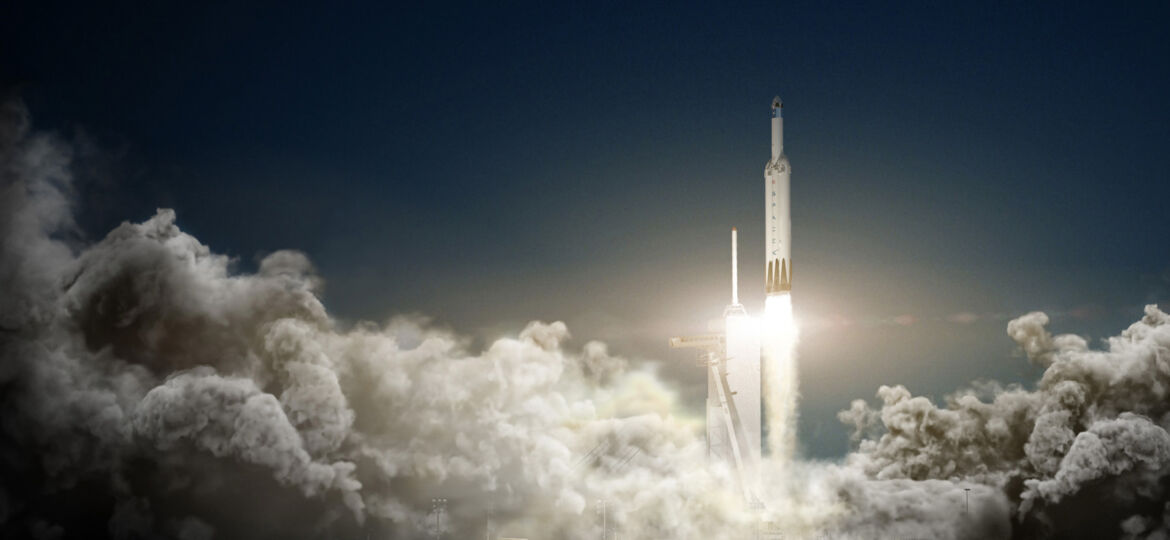
WHY THIS MATTERS IN BRIEF
- Re-using rockets, let alone the world’s largest, is fraught with technical challenges but Musk is confident he can overcome them and dramatically reduce the cost of space exploration
On Friday, after the successful re-use of its Falcon 9 rocket, Elon Musk surprised people by tweeting a suggestion that when SpaceX performs the first demonstration of its Falcon Heavy large payload rocket – which will be twice as powerful as today’s most powerful, operational rocket – the company might attempt to return the huge upper stage back to Earth so it can re-use it in the future.
Considering trying to bring upper stage back on Falcon Heavy demo flight for full reusability. Odds of success low, but maybe worth a shot.
— Elon Musk (@elonmusk) March 31, 2017
The Falcon Heavy, which will be capable of lifting over 54 tonnes of men and equipment into orbit, which is double the amount that today’s Delta IV from the United Launch Alliance (ULA) can launch, is integral to Musk’s ambitions to colonise Mars. If he’s ever going to hit his objective of getting the cost of sending individuals to Mars down from a couple of billion dollars per person to $200,000, or the cost of “an average US home” in his words, then he has to make the Falcon Heavy re-useable.
The Falcon Heavy test, which was revised after last year’s catastrophic Falcon 9 explosion, will take place later this summer from Cape Canaveral’s launch pad LC-39A, the same launch pad that took man to the Moon back in 1969, and if successful Musk hopes the new rocket will help the company win over a whole raft of new customers.
At its heart the Falcon Heavy is made up of three “cores” with a total of 27 Merlin engines, which generate over 5 million pounds of thrust, and over the next few years it will compete, if that’s the right word, with NASA’s own non-reuseable heavy launcher, the Space Launch System (SLS), which has a target launch date of 2018.
By turning the Falcon Heavy into a re-useable launch system, which has been the plan all along, SpaceX hopes that it can use the new system to dramatically undercut the cost of sending equipment into space using both NASA’s SLS and the current Delta IV Heavy, which only has a launch capacity of 23 tons, by a substantial margin.
SpaceX has successfully recovered several of its Falcon 9 rockets now, and these will make up the Falcon Heavy’s three cores as they call them, but it’s taken them years to get to the point where they’ve finally been able to recycle and re-use one. While the Falcon Heavy is a significantly different beast, with Musk saying the likelihood of landing the second stage successfully being “almost nil” it’ll be an interesting event to watch.
Now though, and perhaps even more importantly, one day soon you might be able to buy your own upcycled rocket from eBay. I’d like mine covered in Swarovski crystals…

















You would think musk would have jumped onto NASA’s linear aerospike motor, can you give us more information on the aerospike motors their development by other companies
Hey David, you’d have thought it – apparently the Aerospike has had fuelling issues when used in larger rockets like the Lockheed X-33, and as per your request watch out for tomorrow’s article on Aerospikes complete with video. I hope you enjoy it!
[…] whose larger reusable Falcon Heavy rockets will one day take colonists to Mars, successfully landed a Falcon 9 rocket for the eleventh […]